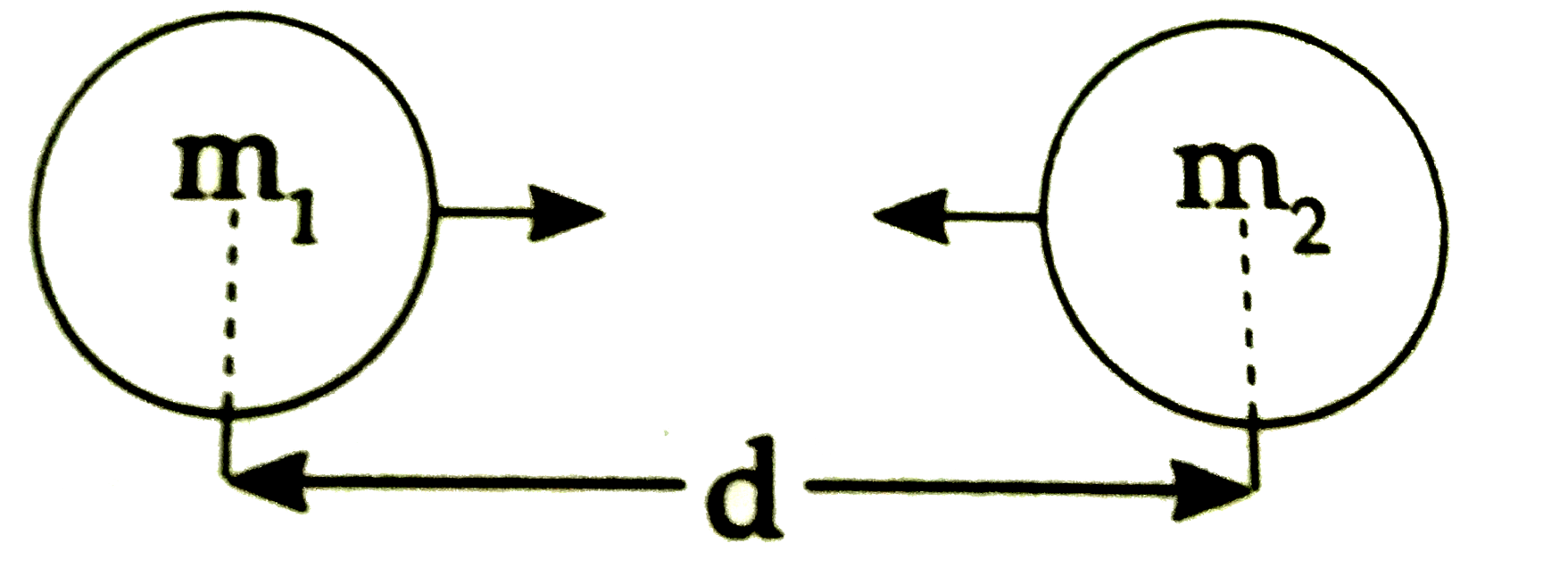If two objects are at a distance of d from each others.

Then F=Gm1m2d2
If the distance between two bodies is 3d
 Solution in Tamil
Solution in Tamil
F=Gm1m2d2
If the distance is tripled,
F'=G=m1m2(3d)2=Gm1m29(d2)=19F
The gravitational force between them becomes 19 th the intial force.
Topper's Solved these Questions
- GRAVITATIONBOOK - CHETAN PUBLICATIONCHAPTER - GRAVITATIONEXERCISE - COMPLETE THE FLOW CHART
1 Videos
- GRAVITATIONBOOK - CHETAN PUBLICATIONCHAPTER - GRAVITATIONEXERCISE - PARAGRAPH BASED QUESTIONS:
15 Videos
- GRAVITATIONBOOK - CHETAN PUBLICATIONCHAPTER - GRAVITATIONEXERCISE - OPEN ENDED QUESTIONS
4 Videos
- DISASTER MANAGEMENTBOOK - CHETAN PUBLICATIONCHAPTER - DISASTER MANAGEMENTEXERCISE - ASSIGMENT-10
11 Videos
- HEATBOOK - CHETAN PUBLICATIONCHAPTER - HEATEXERCISE - ASSIGNMENT - 5 (Answer the following: (Any 1))
3 Videos
Similar Questions
Fill in the blanks

View SolutionRead the paragraph and answer the following question:
You must be knowing about the high and low tides that occur regularly in the sea. The level of the sea water at any given location along sea shore increase and decreases twice a day at regular intervals. High and low tides occur at different times at places. The level of water in sea changes because of the gravitational force exerted by the moon. Water directly under the moon gets pulled towards the moon and the level of water there goes up causing high tide at that place. At two places on the earth at 90∘ from the place of high tide, the level of water is minimum and low tides occur there.
How many times the sea level at the coast change?
View SolutionAccording to Newton's law of gravitation, the apple and the earth experience equal and opposite forces due to gravitation. But it is the apple falls towards the earth and not vice-versa. Why?
View SolutionFill in the blank:
Earthquake is .................. type of disaster.
View SolutionDefine: Latent heat of Vaporization .
View SolutionA lens of focal length f is placed in between an object and screen at a distance D. The lens forms two real images of object on the screen for two of its differenct positions, a distance x apart. The two real images have magnifications m1 and m2, respectivelly (m1>m2). Then,
View SolutionTwo concave mirrors each of focal length 'f' are placed infront of each other co=axially at a distance of 4d in a medium of refractive index n_(0) . A plane galss slab of refractive index 'n' & thickness 'd' is placed at a distance of 'd' from M_(1).A point object O is placed at a distace of 'd' from M_(2) as shown in the figure. Consider first reflection by M_(2) , then refraction on slab and then reflection by M_(1) . Determine the distance of this iamge after reflection from M_(1)
View SolutionThe magnifications produced by a convex lens for two different positions of an object are m1 and m2 respectively (m1>m2). If 'd' is the distance of separation between the two positions of the object then the focal length of the lens is
View SolutionAccording to newtons law of gravitation, for two objects kept at a distance d from each other, if the distance between the objects is doubled, then the force between the two objects ______.
View Solutionयदि दो पिण्डो के द्रव्यमान m1 तथा m2 है तथा उनके बीच की दुरी d है तो उनके बीच का आकर्षण बल होगा -
View SolutionIf two objects are at a distance of d from each others. Then F=(Gm_(1)m_(2))/(d^(2)) If the distance between two bodies is 3d
View SolutionTwo bodies of masses m1 and m2 are separated by a distance R. The distance of the centre of mass of the bodies from the mass m1 is
View Solutionद्रव्यमान m1 तथा m2 के दो कण प्रारम्भ में एक - दूसरे से अनन्त दुरी पर स्थित रखे हैं| जब उनके बीच की दुरी d हो तो m2 का m1 के सापेक्ष वेग ज्ञात कीजिए |
View Solutionm1 और m2, द्रव्यमान के दो पिंड एक - दूसरे से r दूरी पर स्थित हैं । उनके मध्य कार्य करने वाले आकर्षण बल का मान होता है -
View Solutionm1 और m2 द्रव्यमान के दो पिंड एक - दूसरे से r दूरी पर स्थित हैं । वे एक - दूसरे को आकर्षित करते हैं । उनके बीच की दूरी (r+R) करने के लिए आवश्यक कार्य की गणना कीजिए ।
View SolutionTwo bodies of masses m_(1) and m_(2) are separated by a distance R. The distance of the centre of mass of the bodies from the mass m_(1) is
View Solution
